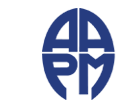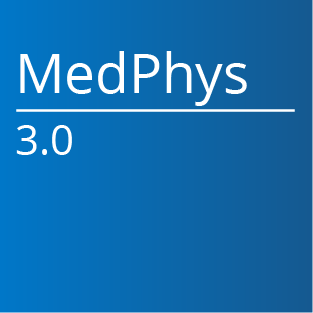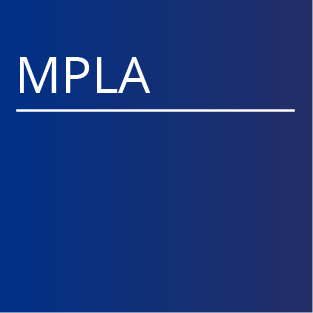Response to Public Radiation Incidents
- Links
- Training
- References
- Documents
AAPM Links
U.S. Department of Energy (DOE)
- Transportation Emergency Preparedness Program (TEPP)
- Emergency Operations Training Academy (EOTA)
- National Nuclear Security Administration (NNSA) - Nevada Site Office
- Navigation Site
- Federal Radiological Monitoring and Assessment Center (FRMAC)
U.S. Environmental Protection Agency (EPA)
U.S. Department of Homeland Security (DHS)
- Federal Emergency Management Institute (FEMA) courses
- FEMA Radiological Emergency Management Independent Study Document
- State Emergency Contact Directory
- Threat Advisory System – Current Elevation System
- The National Domestic Preparedness Consortium (NDPC)
U.S. Department of Defense (DOD)
U.S. Department of Health & Human Services (DHHS)
- Food and Drug Administration
- Radiation Event Medical Management (REMM)
- DHHS Radiation Emergencies & Event Management for Man-made Disasters
- Centers for Disease Control and Prevention (CDC)
- CDC Web-based Training Site & reference for email DVD requests
U.S. Surgeon General Office
American College of Radiology (ACR)
- In cooperation with the American Association of Physicists in Medicine (AAPM) & American Society for Therapeutic Radiology and Oncology (ASTRO)
Disaster Preparedness for Radiology Professionals – Response to Radiological Terrorism
American Hospital Association (AHA)
Joint Commission on Accreditation of Healthcare Organizations (JCAHO)
Armed Forces Radiobiology Research Institute (AFRRI)
- Medical Management of Radiological Casualties Handbook
- Biodosimetry Assessment Tool (BAT) software
- MEIR Training Course
Health Physics Society (HPS)
Presentations
- Emergency Department Management of Radiation Casualties
- 2005 HPS Meeting Special Program
- J. Barnes and B Walton. Radiological Response: Myth vs. Reality
- B. Buddemeier – WMD Training Materials for Health Physicists and Responders
New Mexico Tech
Radiation Injury Treatment Network (RITN)
American Nuclear Society (ANS)
Oak Ridge Institute for Science and Education (ORISE)
- Radiation Emergency Assistance Center/Training Site (REAC/TS)
- Oak Ridge Associated Universities (ORAU)
Conference of Radiation Control Programs Directors, Inc. (CRCPD)
General Physics Worldwide
International Atomic Energy Agency (IAEA)
Louisiana State University (LSU)
Texas A&M University
Dade Moeller & Associates Radiation Safety Academy
Radionuclide Table
TRAINING
| DOE: EOTA | 505-842-7110 |
| CDC | Web-based (see above) |
| GP Worldwide - DPETAP | 800-727-6677 (Ext. 63624) |
| ORISE - REAC/TS | 865-576-3131 |
| ORAU | 865-576-3576 |
| AFRRI – MEIR | 301-295-0316 |
| D Meoller & Assoc. Academy | 800-871-7930 |
| Louisiana State University | 877-829-5770 |
| Texas A&M University | 877-833-9638 |
| New Mexico Tech. - EMRTC | 575-835-5312 |
DOCUMENT REFERENCES
- Armed Forces Radiobiology Research Institute (AFRRI) – Military Medical Operations. Medical management of the radiological casualties Handbook. Bethesda, Maryland. Second Edition. 2003.
- National Council on Radiation Protection and Measurements (NCRP). NCRP Report No. 065 - Management of persons accidentally contaminated with radionuclides. 1980.
- National Council on Radiation Protection and Measurements (NCRP). NCRP Report No. 138 - Management of terrorist events involving radioactive material. 2001.
- Joint Commission on Accreditation of Healthcare Organizations (JCAHO). Health care at the crossroads - strategies for creating and sustaining community-wide emergency preparedness systems. 2003.
- Centers for Disease Control and Prevention (CDC). Population monitoring in radiation emergencies: a guide for state and local public health planners. Atlanta, Georgia. 2007.
- U.S. Department of Energy (DOE). Comprehensive emergency management system. 2004.
- R. H. Kitchen and E. G. Hendee. Point-Counterpoint: Exposure limits for emergency responders should be the same as the prevailing limits for occupational radiation workers. Medical Physics Journal 35(1): 1-3 (2008).
- W. Poston et al. Public Protection from Nuclear, Chemical and Biological Terrorism. Edited by A. Brodsky, R. H. Johnson and R. E. Goans. Medical Physics Publishing. Madison, 2004.
- Health Effects of the Chernobyl Accident and Special Health Care Programmes. Edited by B. Bennett, M. Repacholi and Z. Carr. (WHO, Geneva, 2006); http://www.who.int/ionizing_radiation/chernobyl/en/
- Manual for First Responders to a Radiological Emergency (IAEA), Vienna, 2006; http://www-pub.iaea.org/MTCD/publications/PDF/EPR_FirstResponder_web.pdf
- Committee on the Biological Effects of Ionizing Radiation (BEIR V), National Research Council. Health Effects of Exposure to Low Levels of Ionizing Radiation, 1990.
Free Guidance Documents
American College of Radiology (ACR) - In cooperation with the
American Association of Physicists in Medicine (AAPM) &
American Society for Therapeutic Radiology and Oncology (ASTRO)
Disaster Preparedness for Radiology Professionals – Response to Radiological Terrorism
Hospital Triage in the First 24 Hours after a Nuclear or Radiological Disaster
ME Berger, RB Leonard, RC Ricks, AL Wiley, PC Lowry DF Flynn
Purchasable Books
NCRP Report No. 065 - Management of persons accidentally contaminated with radionuclides
NCRP Report No. 138 - Management of terrorist events involving radioactive material
Courtesy Of:
The American Association of Physicists in Medicine (AAPM)
Working Group on Response to Radiation Incidents (WGRRI)
October 28, 2008
updated June 4, 2009
updated August 17, 2023
For more information contact the WGRRI:
Eric G. Hendee, M.S., DABR (Chair) eric.hendee@phci.org
Michael S. Gossman, M.S., DABR, FAAPM, FACR chief.gossman@aol.com























